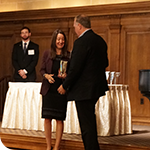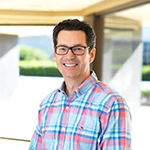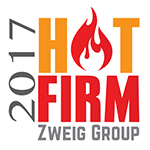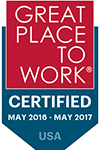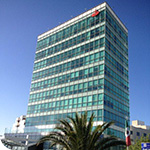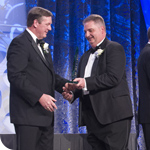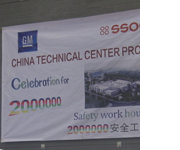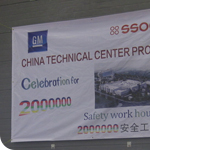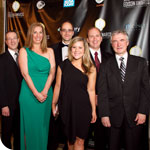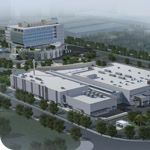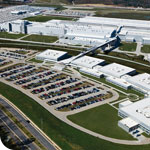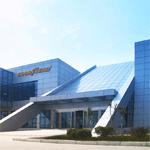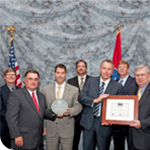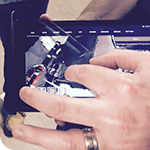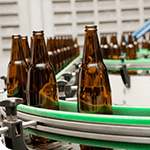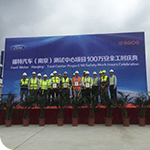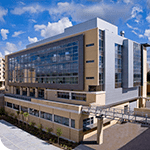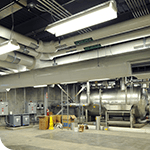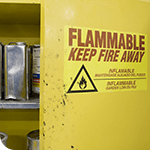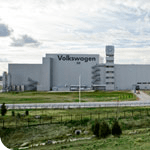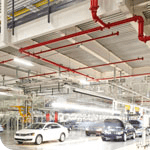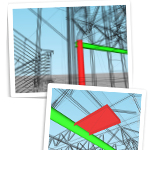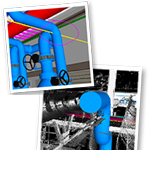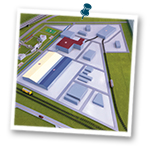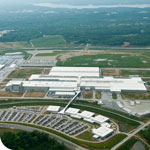Volkswagen’s new Chattanooga, Tennessee production facility is a model of environmental responsibility and sustainability. SSOE integrated these core values into every level of the project, from design through construction. The site includes outbound logistics, an extensive training center, media center, social hall, cafeteria, technical center, tank farm, recycling center, and fire station.
[two_third_last]
[accordion title=”Sustainable or Recycled Materials and Resources”]
The buildings are comprised of a concrete and steel infrastructure with an insulated metal skin. Locally extracted and manufactured materials were specifi ed. To the fullest extent possible, wood, cardboard, metal, and concrete were recycled using a local vendor resulting in nearly 78% (4,602 tons) of construction and demolition waste being recycled or salvaged.
48% of total building materials were manufactured using recycled materials.
[/accordion]
[accordion title=”Energy Efficiency”]
By using ASHRAE/IESNA standards to design the energy consuming systems, the team reduced the amount of energy that will be used in both the facility and manufacturing processes by 42%.
On-site renewable energy sources generate a portion of the buildings’ energy needs. The facility will include a solar park to generate energy.
A white, reflective roofing material was installed on 100% of the roof. It refl ects heat resulting in lower cooling costs and energy savings.
[/accordion]
[accordion title=”Site Selection / Sustainable Site”]
Significant time and money was invested in order to prepare the brownfield site— previously a munitions manufacturing and testing site. The team stabilized the soils, mitigated the pollution, and relocated an existing stream. Volkswagen set aside 235 acres as permanent green spaces and reserved additional acreage for native or adapted plants.
An extensive storm water conveyance system consisting of bioswales, vegetative ditches, and culverts acts as the primary storm water management system. Specific plants were planted in the ditches and swales to fi ltrate suspended solids.
To reduce the heat island effect, roller compacted concrete was placed in strategic areas of the parking lots and roadways.
[/accordion]
[accordion title=”Eco-Friendly Practices”]
All exterior lights provide only the minimum lighting required for safety to ensure that light does not spill into the night sky and adversely affect the surrounding nocturnal environments through excessive glare.
Measures to promote environmentally friendly commutes include providing bike racks for visitors and employees, showers and lockers for employee use, and preferred parking for those driving low-emitting and fuel-efficient vehicles and those who carpool.
[/accordion]
[accordion title=”Indoor Air Quality”]
The HVAC system utilizes ASHRAE 62-2004 as its basis. A construction indoor air quality management program was successfully implemented with the support of all contractors working on-site. A stringent low-emitting materials policy is in place to reduce the use of off-gassing materials within the buildings in accordance with LEED indoor environmental credits 4.1–4.4 and 5.and preferred parking for those driving low-emitting and fuel-efficient vehicles and those who carpool.
[/accordion]
[accordion title=”Water Conservation”]
Through low-flow water closets and urinals, the plant achieves a 58% reduction in potable water used for sewage conveyance. Additionally, the plant collects rainwater from its roof for use in the sanitary waste system. Low-fl ow showers and faucets further decrease potable water usage. Together, these strategies save more than 3 million gallons of potable water each year.
All grass and plant species on-site are either native or adapted and are drought-resistant, allowing them to survive without a permanent irrigation system.
[/accordion]
To learn more about the VW facility, visit: www.ssoe.com/platinum
[/two_third_last]
